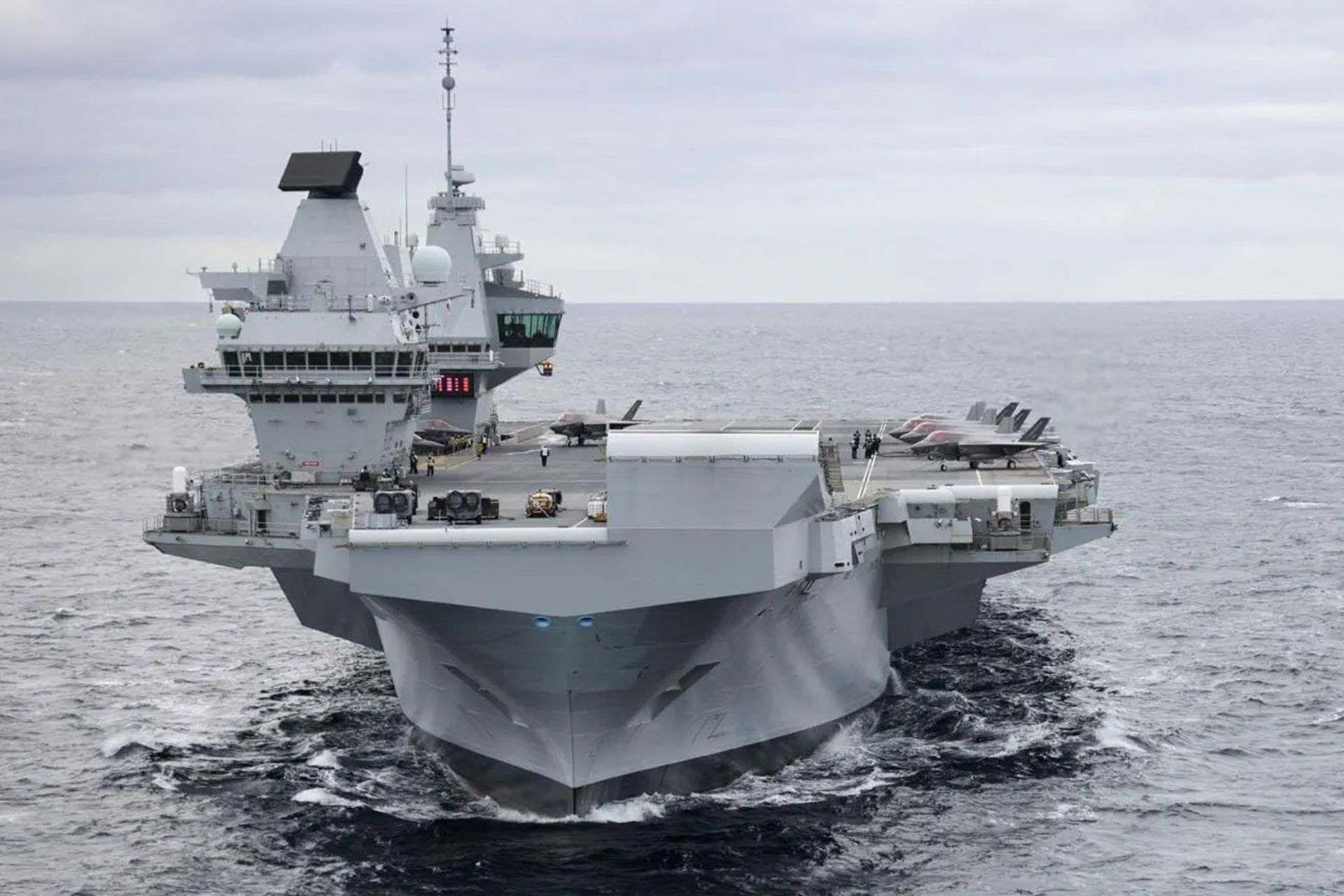Breaking News
Analysis: Escalating Drone Threats to Naval Assets and Maritime Security.
As naval operations gain strategic importance, threats to maritime assets, both military and civilian, are rapidly evolving. A recent incident involving the British aircraft carrier HMS Queen Elizabeth highlights this growing danger. On November 22, 2024, an unidentified drone was detected near the vessel during its port call in Hamburg, Germany. The event underscores the complex risks posed by drones and autonomous systems in modern maritime environments.

An unidentified drone detected near the British aircraft carrier HMS Queen Elizabeth during its port call in Hamburg, Germany, on November 22, 2024, underscores the growing threat posed by drones (Picture source: UK MoD)
During a five-day visit to Hamburg aimed at strengthening defense cooperation between the United Kingdom and Germany, a drone measuring approximately 1.5 x 1.5 meters was spotted near the HMS Queen Elizabeth. Despite a swift response by the Bundeswehr, equipped with HP 47 handheld jammers, the drone evaded capture, disappearing toward the Tollerort container terminal, an infrastructure partially controlled by China’s COSCO Shipping Ports Limited. This incident raises concerns about potential surveillance or intelligence-gathering activities by state or non-state actors.
Drones, particularly small unmanned aerial vehicles (UAVs), have become widely used for their versatility and cost-effectiveness. They can be employed for reconnaissance, electronic disruption, or even precise strikes on maritime targets. Their ability to operate below the radar and maneuver in densely populated or strategic areas, such as ports, presents significant challenges for traditional defense systems.
This incident is not isolated. Similar drone incursions were reported at UK Royal Air Force bases, including RAF Lakenheath and RAF Fairford, between November 20 and 22. Other incidents, such as drones spotted above the Japanese aircraft carrier JS Izumo and the USS Ronald Reagan at Yokosuka, Japan, further indicate a global trend. Drones are increasingly used for intelligence gathering or tactical provocations, often attributed to actors like China or Russia.
Addressing these challenges requires a multidimensional approach that integrates advanced technologies and operational strategies. Several solutions are being implemented or are under development:
Electronic Warfare and Jamming Systems: Tools like the jammers used by the Bundeswehr can disrupt communication between a drone and its operator or neutralize GPS navigation. However, autonomous drones equipped with advanced technologies demand more robust countermeasures.
Directed Energy Weapons (DEWs): Lasers and high-powered microwave systems offer a promising solution, having been tested by the U.S. Navy to quickly neutralize threats at relatively low operational costs compared to traditional missile defenses.
Autonomous Anti-Drone Systems: AI-powered systems can detect, track, and engage multiple threats simultaneously, enhancing response efficiency against complex attacks.
Kinetic Defense Systems: Systems like the Phalanx CIWS, already installed on many ships, including the HMS Queen Elizabeth, provide effective close-range defense but require complementary measures for distant threats.
Improved Detection Capabilities: Enhancing radar sensors and AI-based analytics is crucial for the early detection of drones, especially those operating at low altitudes or using stealth technologies.
The HMS Queen Elizabeth incident highlights the need for reinforced international cooperation. Information sharing, joint exercises, and the development of common standards for counter-drone measures are vital to anticipate future threats. NATO and other defense alliances play a key role in implementing these initiatives.
The drone threat to maritime security is evident, as demonstrated in ongoing operations off Yemen. The Houthis, an Iran-backed armed group, extensively use drones to disrupt maritime security in strategic areas such as the Bab el-Mandeb Strait and the Red Sea. These drones, often equipped with explosives or used for reconnaissance, target military and commercial vessels, disrupting critical trade routes. This asymmetric strategy enables the Houthis to bypass conventional military capabilities, exploiting drones' mobility and cost-effectiveness to execute precise, hard-to-counter attacks.
The drone activity near HMS Queen Elizabeth fits into a broader pattern of increased drone activity targeting critical military assets. Between November 20 and 22, 2024, multiple U.S. airbases in the UK, including RAF Lakenheath, RAF Mildenhall, and RAF Fairford, were also overflown by unidentified drones.
These simultaneous incursions raise concerns about a potential coordinated campaign of surveillance or provocation by state or non-state actors. While the Royal Air Force deployed specialized protection units and mobilized F-15 aircraft to monitor the situation, these incidents underscore how autonomous threats can bypass traditional security systems. The parallels between these airbase incursions and the HMS Queen Elizabeth incident illustrate an increasing vulnerability, highlighting the urgent need for coordinated responses to protect military assets across maritime and aerial domains.


























